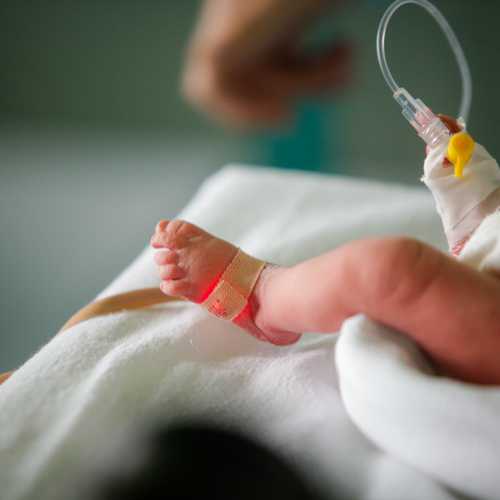Printer-friendly version of this consent form and the signature page
View
Guideline
OB Guidelines Appendix H: Primary Cesarean Delivery on Patient Request
The Benefits and Risks of a Scheduled Elective Primary Cesarean Delivery
- A cesarean delivery can be planned; the date can be chosen.
- You may not experience labor.
- The most common problems with cesarean delivery are hemorrhage (uncontrolled bleeding) and infection. Both are higher risk for cesarean deliveries than for vaginal births.
- For the birthing person, blood loss is usually greater with a cesarean than with a vaginal delivery. Approximately 12 in 1,000 of all patients having a cesarean need a blood transfusion.
- Injury to the urinary system (the bladder and drainage to and from the bladder) occurs in less than 1 in 200 women who deliver by cesarean. These problems are usually identified and repaired at the time of the cesarean. Vaginal delivery does not eliminate risk of injury to the urinary system.
- Injury to the birthing person’s bowel (intestines, colon, or rectum) is rare at the time of cesarean. It occurs in less than 1 in 1,000 cesareans. Such an injury will usually be recognized and fixed at the time of the cesarean. Injury to the birthing person’s bowel almost never happens after a vaginal delivery.
- A cesarean delivery can result in serious problems in subsequent pregnancies. Occasionally, the placenta in a future pregnancy implants over the old cesarean scar, which
is usually near the cervix (the opening of the womb to the birth canal). This increases the risk of bleeding and premature delivery. The chance of the placenta implanting in the wrong place increases with each additional cesarean. - Having had one cesarean increases the chance of having another one. Each cesarean increases the risk of scarring afterwards and may increase the difficulty of future surgeries. There is also a small but increased risk for rupture of the uterus during labor for patients who have had a previous cesarean.
- Rarely, the inability to get pregnant, or chronic pelvic pain, may result from scar tissue (adhesions) that may form after cesarean delivery.
- Rarely, a hysterectomy (removal of the uterus) may be needed for the treatment of uncontrollable bleeding.
More CRICO Guidelines or Algorithms
CRICO decision support tools.
Neonatal Encephalopathy Guidelines
Guideline
At the behest of its membership, the Academic Medical Center Patient Safety Organization convened a Task Force to arrive at a set of consensus-based guidelines for the most effective use of therapeutic hypothermia in cases of suspected neonatal encephalopathy.


General Informed Consent Guidelines
Guideline
A document to assist institutions in reviewing policies, procedures and forms relative to obtaining and documenting informed consent.

Challenge: Take the OB Clinical Guidelines Test
Guideline
Take this test and see if you already follow these best practices from the Obstetrical Services of the CRICO-insured Institutions.

OB Guideline 15: Assessment and Monitoring in Labor and Delivery
Guideline
During prenatal care, the clinician and patient will discuss common events and procedures in labor, including methods of assessing fetal well-being.
